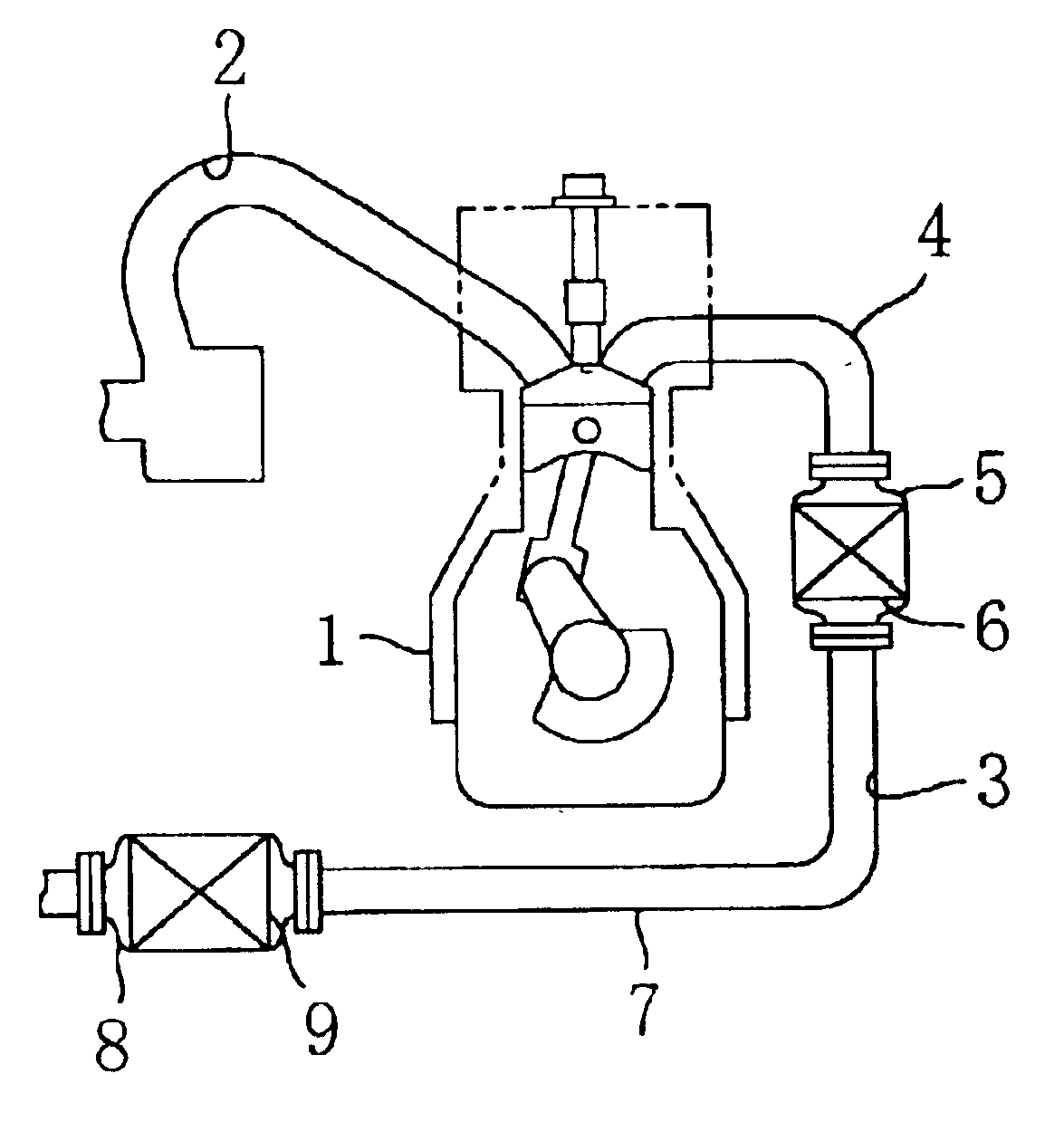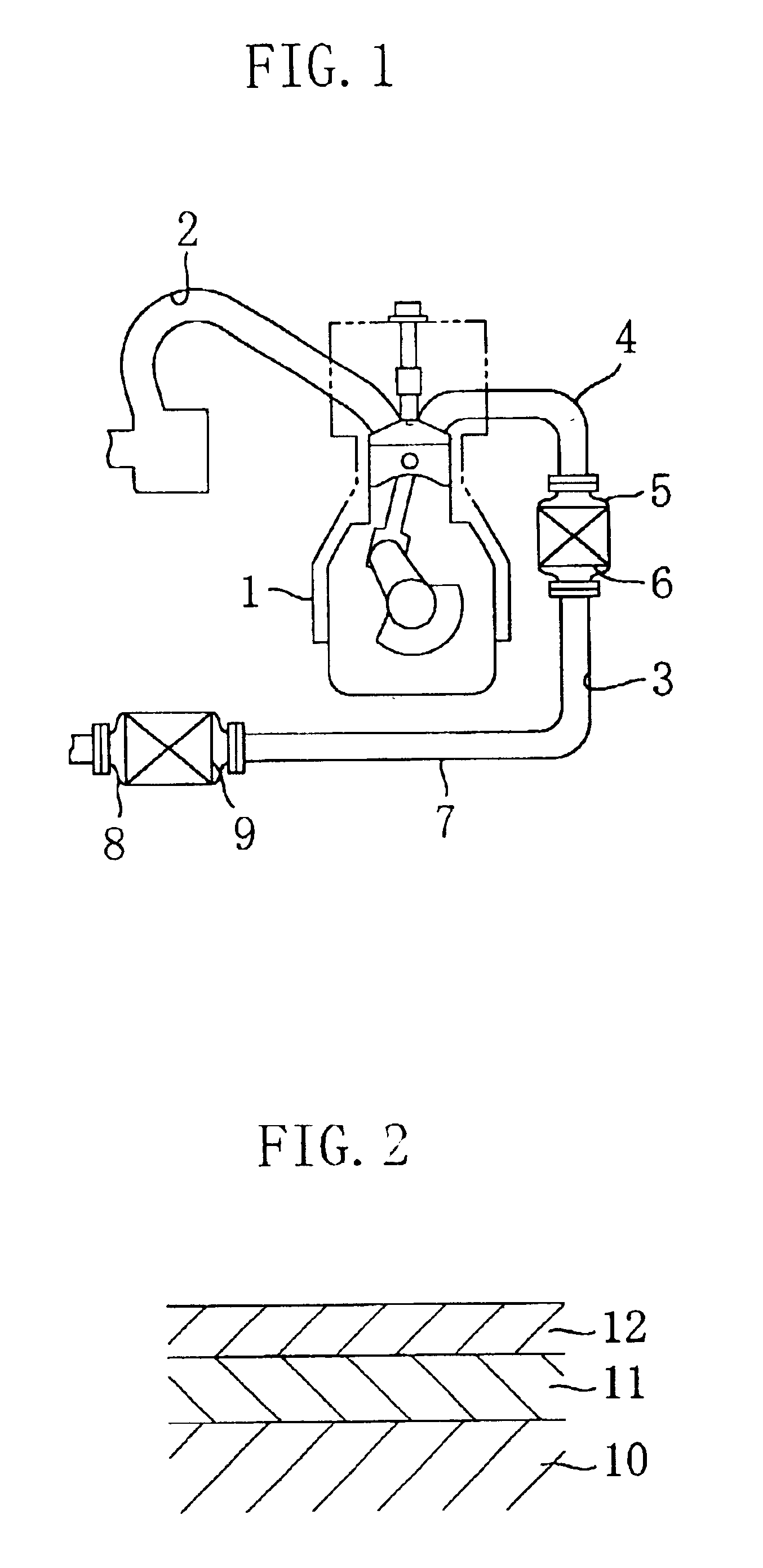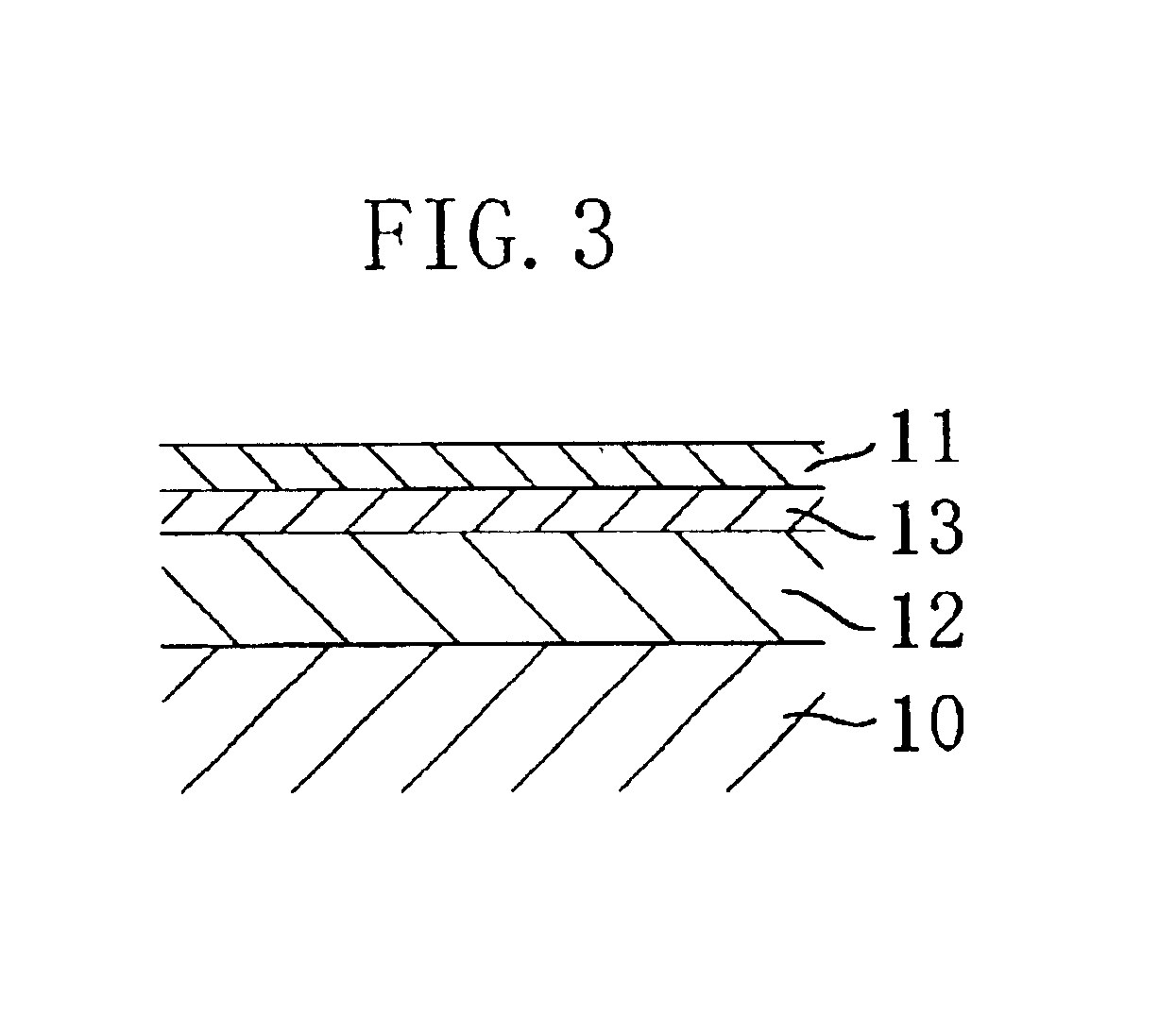Oxidation catalyst
a catalyst and purification technology, applied in the direction of physical/chemical process catalysts, other chemical processes, separation processes, etc., can solve the problems of inability to avoid degradation of low temperature activity of pd, disadvantageous increase in the temperature at which its activity starts to be displayed, etc., and achieve the effect of suppressing the production of alloys
- Summary
- Abstract
- Description
- Claims
- Application Information
AI Technical Summary
Benefits of technology
Problems solved by technology
Method used
Image
Examples
embodiment 1
[0060]A catalyst with the two-layer structure shown in FIG. 2 is used in this embodiment. The carrier 10 used in this embodiment is a honeycomb carrier made from cordierite and having 400 cells in a cross-section of approximately 6.45 cm2 (namely, 1 inch2), a wall thickness between adjacent cells of approximately 0.15 mm (6 milli-inch) and a volume of 1.3 L.
[0061]The HC adsorbent layer 11 used in this embodiment is formed by impregnating, with a solution of Ag and Bi, a mixture layer of β-type zeolite and a hydrated alumina binder with a boehmite structure, so as to carry Ag and Bi. The supported amount of the β-type zeolite is 160 g / L, and the supported amount of the hydrated alumina binder is 20 mass % of that of the β-type zeolite. The β-type zeolite has a SiO2 / Al2O3 ratio of 300.
[0062]The Pd catalyst layer 12 used in this embodiment is formed by impregnating, with a solution of Ag and Bi, a mixture layer of a catalyst powder in which Pd is carried on a supporting member (that is...
embodiment 2
[0093]A catalyst with the three-layer structure shown in FIG. 3 is used in this embodiment. The carrier 10 used in this embodiment is a honeycomb carrier made from cordierite and having 400 cells in a cross-section of approximately 6.45 cm2 (namely, 1 inch2), a wall thickness between adjacent cells of approximately 0.15 mm (6 milli-inch) and a volume of 1.3 L.
[0094]The HC adsorbent layer 11 used in this embodiment is formed by impregnating, with a solution of Ag and Bi, a mixture layer of β-type zeolite and a hydrated alumina binder with a boehmite structure, so as to carry Ag and Bi. The supported amount of the β-type zeolite is 160 g / L, and the supported amount of the hydrated alumina binder is 20 mass % of that of the β-type zeolite. The β-type zeolite has a SiO2 / Al2O3 ratio of 300.
[0095]The Pd catalyst layer 12 used in this embodiment is formed by impregnating, with a solution of Ag and Bi, a mixture layer of a catalyst powder in which Pd is carried on a supporting member (that ...
PUM
| Property | Measurement | Unit |
|---|---|---|
| Shape | aaaaa | aaaaa |
Abstract
Description
Claims
Application Information
 Login to View More
Login to View More - R&D
- Intellectual Property
- Life Sciences
- Materials
- Tech Scout
- Unparalleled Data Quality
- Higher Quality Content
- 60% Fewer Hallucinations
Browse by: Latest US Patents, China's latest patents, Technical Efficacy Thesaurus, Application Domain, Technology Topic, Popular Technical Reports.
© 2025 PatSnap. All rights reserved.Legal|Privacy policy|Modern Slavery Act Transparency Statement|Sitemap|About US| Contact US: help@patsnap.com



